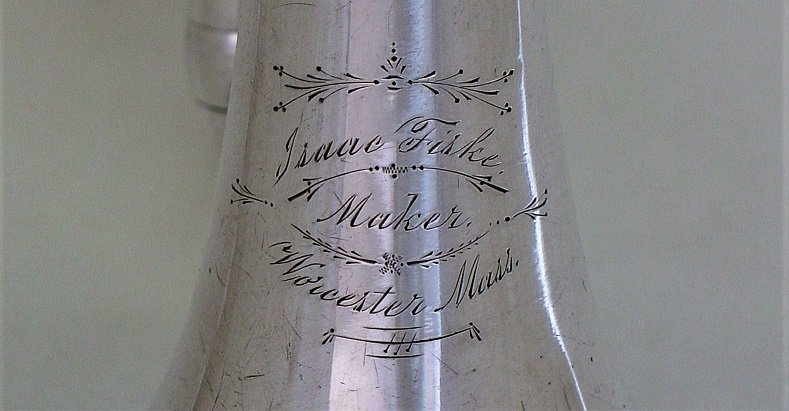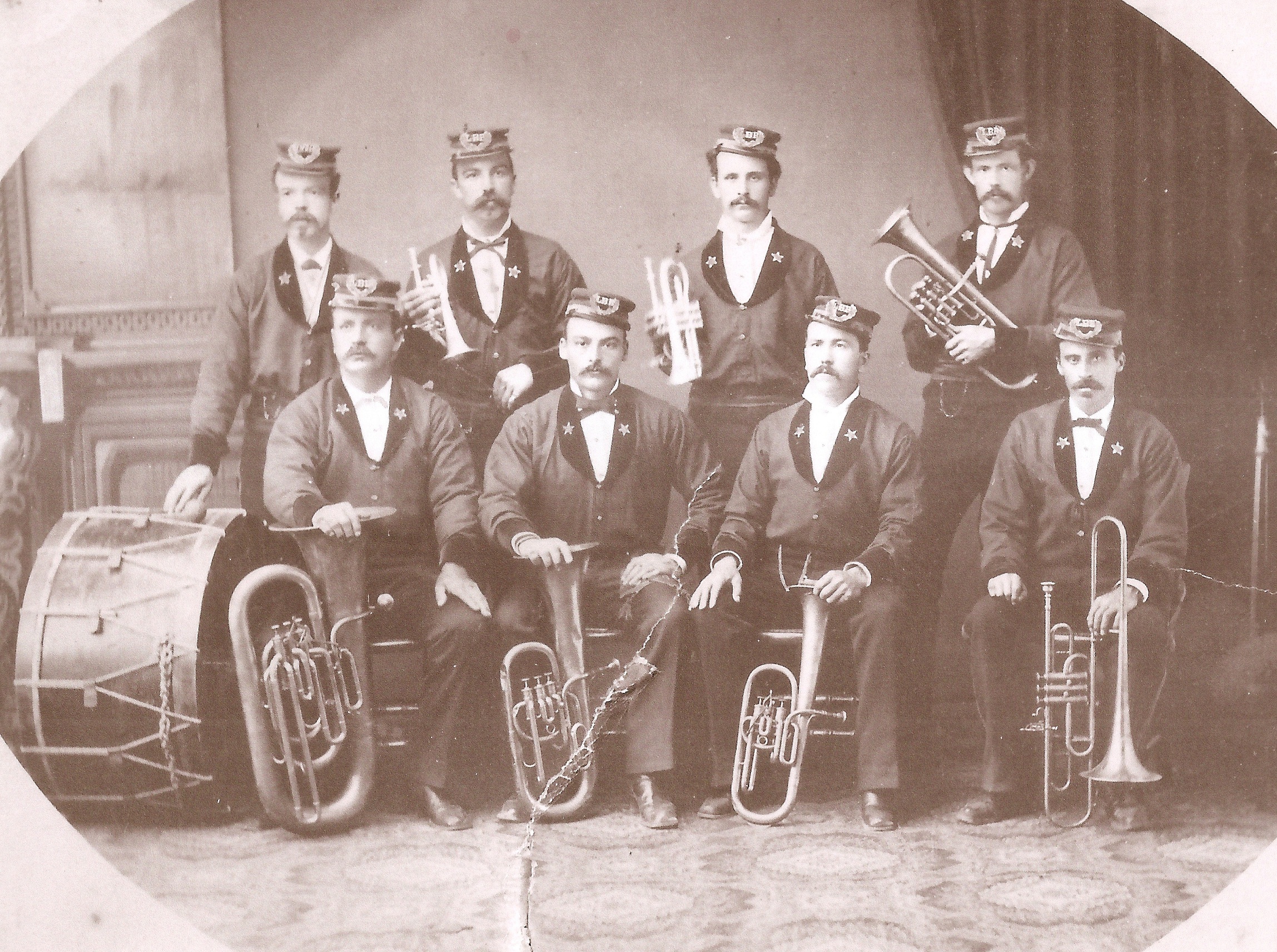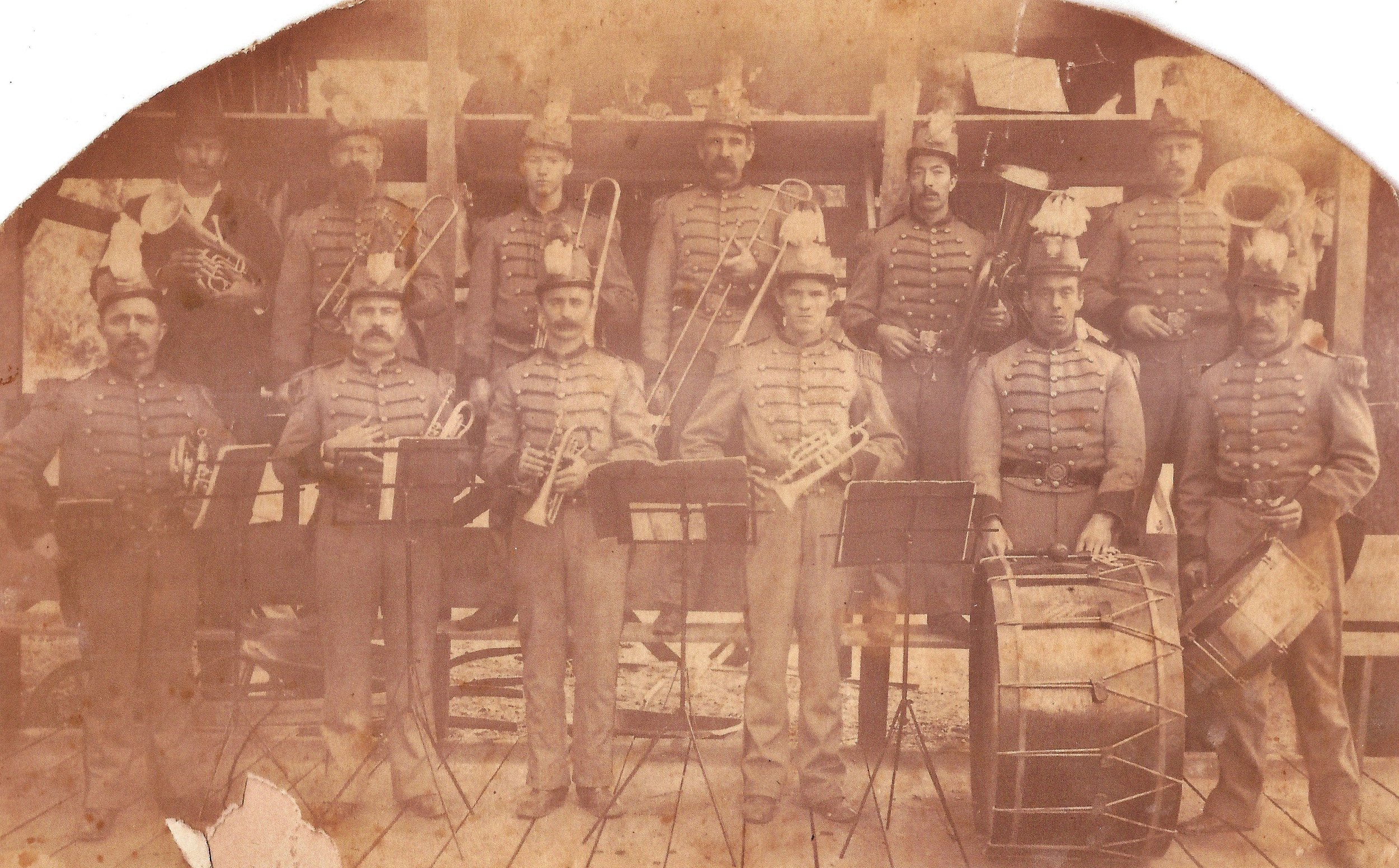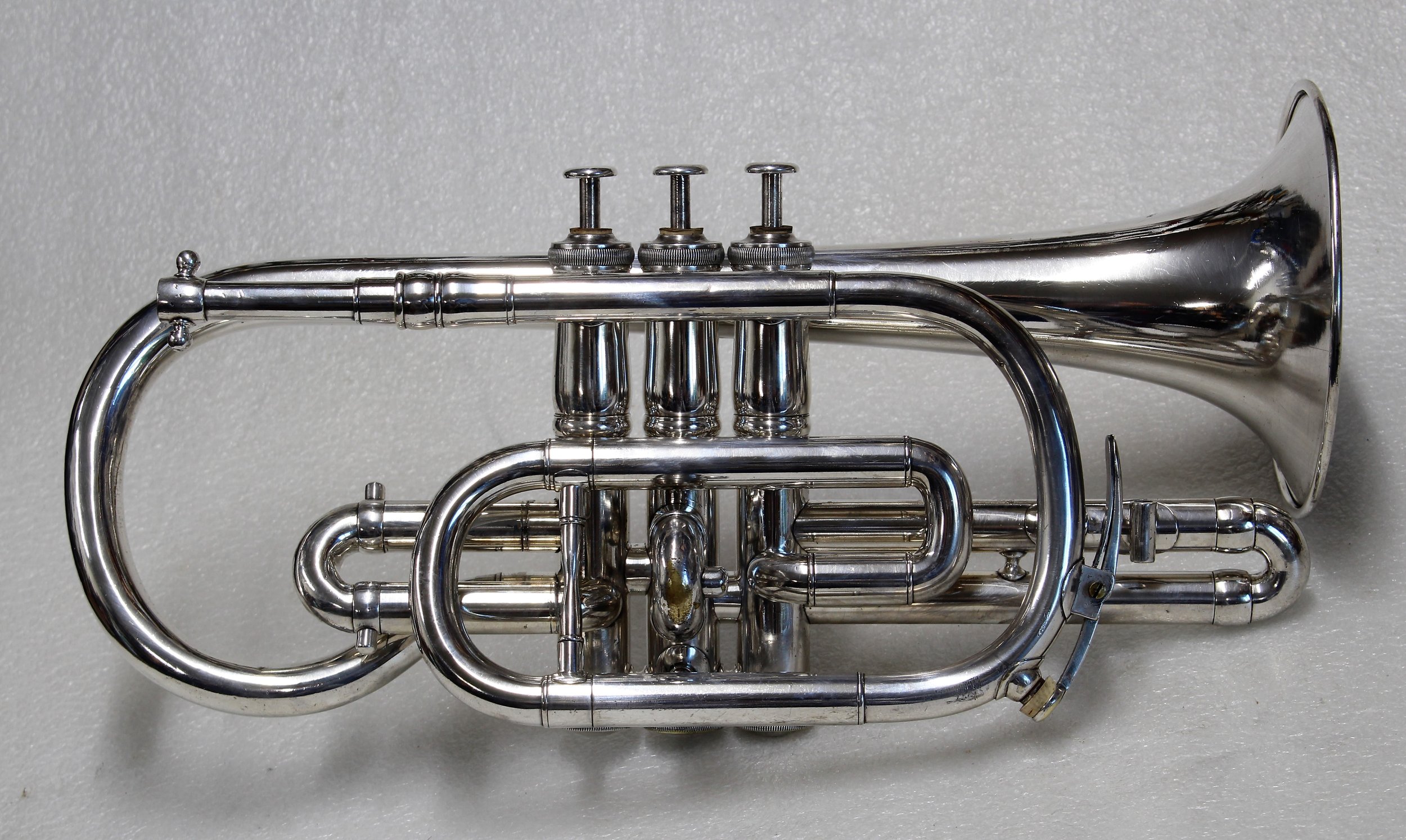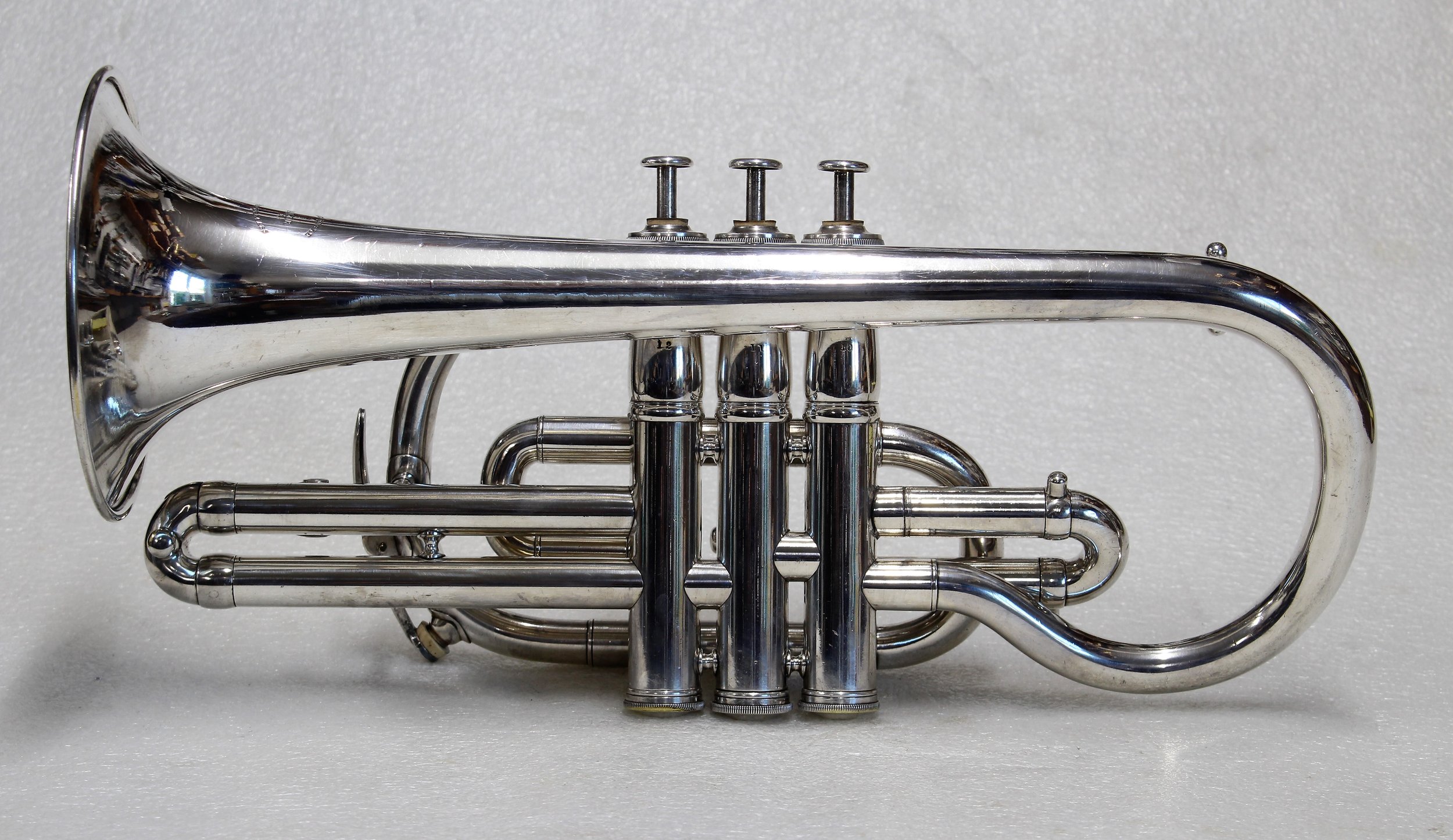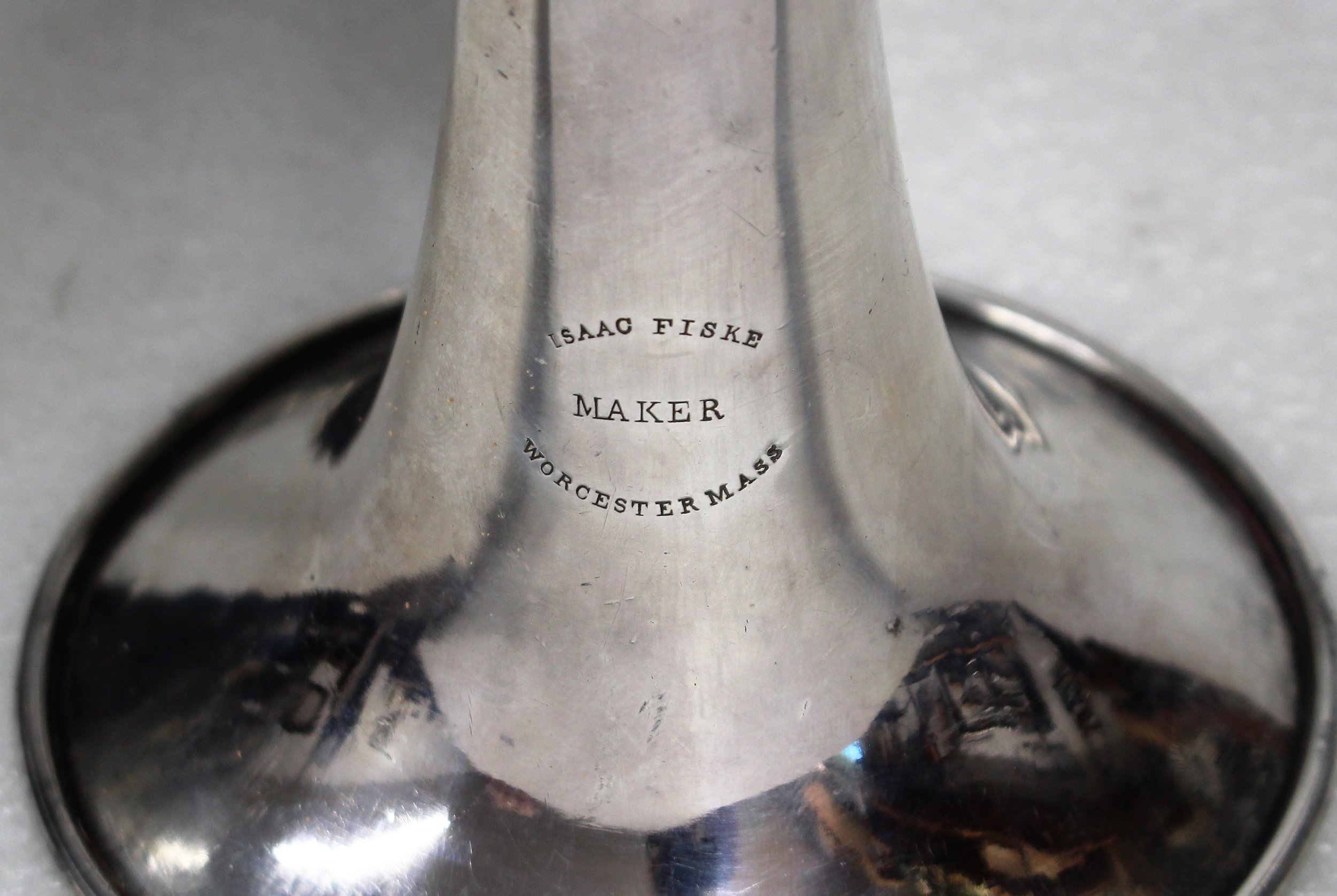Isaac Fiske Piston Valve Cornets
Among the early American brass instrument makers, Isaac Fiske was probably the last to make piston valve cornets available to his customers. He had been making a full line of rotary valve instruments since the early 1850s and earlier styles a decade before that. In the late 1860s, his answer to the change of fashion in cornets was to design a rotary valve mechanism that put the instrument in the same ergonomic position as those with Perinet piston valves. These pushrod actuated valves had the added benefits of a shorter stroke and all the superior mechanical and acoustical qualities that were always available in Fiske's instruments.
Fiske was still loosing market share both because the mode was increasingly French style cornets, and also because good quality instruments were becoming less expensive from both overseas makers and the newly emerging US market leader, C.G. Conn. It is well known, of course, that Conn bought Fiske's shop in 1887.
Nothing concrete is known about when Fiske first had supplied piston valve cornets, but it was most likely in the late 1870s. The image below is an ad by Fiske in 1879 or 1880. The Fiske shop produced fairly large numbers of very high quality rotary valve instruments at prices competitive with other high quality makers. This would lead one to believe that it wouldn't be difficult to make the changes needed to produce Perinet piston valves. There are less than ten examples known to exist and this is the first one that I've ever had in my hands. After closely studying this cornet, I have become convinced that Fiske did not make this valve section.
Fiske advertising, circa 1879.
Most new model piston valve cornets introduced in the 1860s and 1870s were copies, more or less, of the Courtois cornets being played by most of the world's most famous soloists. The fourth photo below is this Fiske cornet next to Matthew Arbuckle's own cornet. I compared this to several Courtois cornets from the same era and the valve section parts are interchangeable. That includes the top and bottom caps, buttons, stems and even the pistons. The bore size of this cornet is the same as the Arban Model which has a wider third slide crook, but the first two slides were also interchangeable.
The overall design of this cornet is very much like the Levy, Arbuckle, Koenig and Emerson models made by Courtois and I could easily conclude, based on what I've just said that the entire instrument was made by Courtois, but there are some unique parts as well. The most easily identified are the main tuning slide brace and two other braces as well as the waterkey lever mount and screw. The seams in the main tuning slide crook and the bell are constructed in the manner that Fiske utilized and not like those by Courtois. I can only conclude that Fiske purchased valve sections from Courtois for use in his production of his Courtois copy.
I have since seen cornets from four other makers that appear to have a Courtois valve section. It doesn’t make much sense that Courtois, whose instruments were more expensive at the time, would be able to supply valve sections to other makers at a wholesale price. This has lead me to believe that Courtois, along with these makers were purchasing valve sections from another Paris maker that specialized in this sector of the business.
To complicate matters further, I later restored a piston valve Fiske Bb cornet that was made of nickel silver. While it looked very much like this one, the valves were from a different maker. The parts mentioned above were not interchangeable with Courtois cornets and it had fixed valve guides. I became convinced that that valve section was indeed made in the Fiske shop based on the fact that some of the knuckles were made using his patented technique.
The silver plated cornet was purchased from the family of the original owner, John Toy. The family was also able to provide copies of four photos of bands that he played in. I've included two of these photos to the right. In the first Mr. Toy is in the top row, second from the left and in the second he is in the bottom row, third from the left. The first is obviously earlier, probably taken about 1880, when I suspect that this cornet was very new.
John Toy was born in England in 1856 and emigrated to the US in 1873 when he was 17 years old. Here he married an English girl and headed west to settle in Grass Valley, California, one of many towns that sprung to life in 1848 during the gold rush. The rush was over by 1855, but Grass Valley maintained some prosperity in the late 19th century. In the 1900 census, most of the Toy's neighbors were listed as quartz miners. John and Mary Toy raised 8 children in Grass Valley. Besides playing in the band, John Toy was active in his community as a member of the Knights of Pythias and made his living as a saloon keeper. We are very fortunate that the family kept these heirlooms after John's death in 1929.
Even though this cornet was used extensively, it was cared for well enough that it is well preserved. I removed a number of dents and the valves are a bit loose, but it is still an excellent playing instrument. The Silver plated finish is original and mostly intact. It retains its original case and all of its parts other than an A shank. The curved tubing seen lying in front of the cornet in the second photo and installed on it in the third changes the pitch to C. With the normal Bb tuning slide in place, the valve slides need to be extended to a scribed mark for the correct Bb lengths.
The two mouthpieces are original as well. The gold plated mouthpiece has a rubber rim and C.G. Conn's patent stamped on the shank. This could have been made in either shop and I have seen a number of unsigned, patented mouthpieces of this type in Fiske cornet cases. They are of slightly different design than those stamped with Conn’s name, making me think that they were made by Fiske with license to Conn’s patent. The other mouthpiece appears to be a Fiske Eb cornet mouthpiece that has had the shank filed to fit deeply into the mouthpipe shank. Perhaps the original owner used this mouthpiece for playing the cornet in C.
The overall length, with mouthpiece removed is 13 3/8", the bell rim diameter measures 4 13/16" and the bore is .463"
Another Fiske Bb cornet with piston valves surfaced years later, shown in photos below. This one is unique in this very small sample in several ways. The overall design appears to be more a copy of Bb cornets made by Besson in both Paris and London than those by Courtois, including the design of the valve casings and caps. It also occurred to me that Mr. Fiske may have been making a version of his cornet that was a bit more like the Boston Three Star that was selling in larger numbers than his products. Indeed, the valve bore measures .472” as in the Boston, but the bell is very different from either the Three Star or the other known Fiske piston valve cornets. A comparison reveals that the bell is larger through the taper than either the Boston Three or Two Star cornets and only a little smaller than the One Star.
Close examination of the valve assembly, while the external details are very different from the nickel silver cornet above, the internal details appear identical. The silver plating is covering evidence of Fiske’s method of making the valve knuckles, although the valve slide crooks are clearly made in this method.

